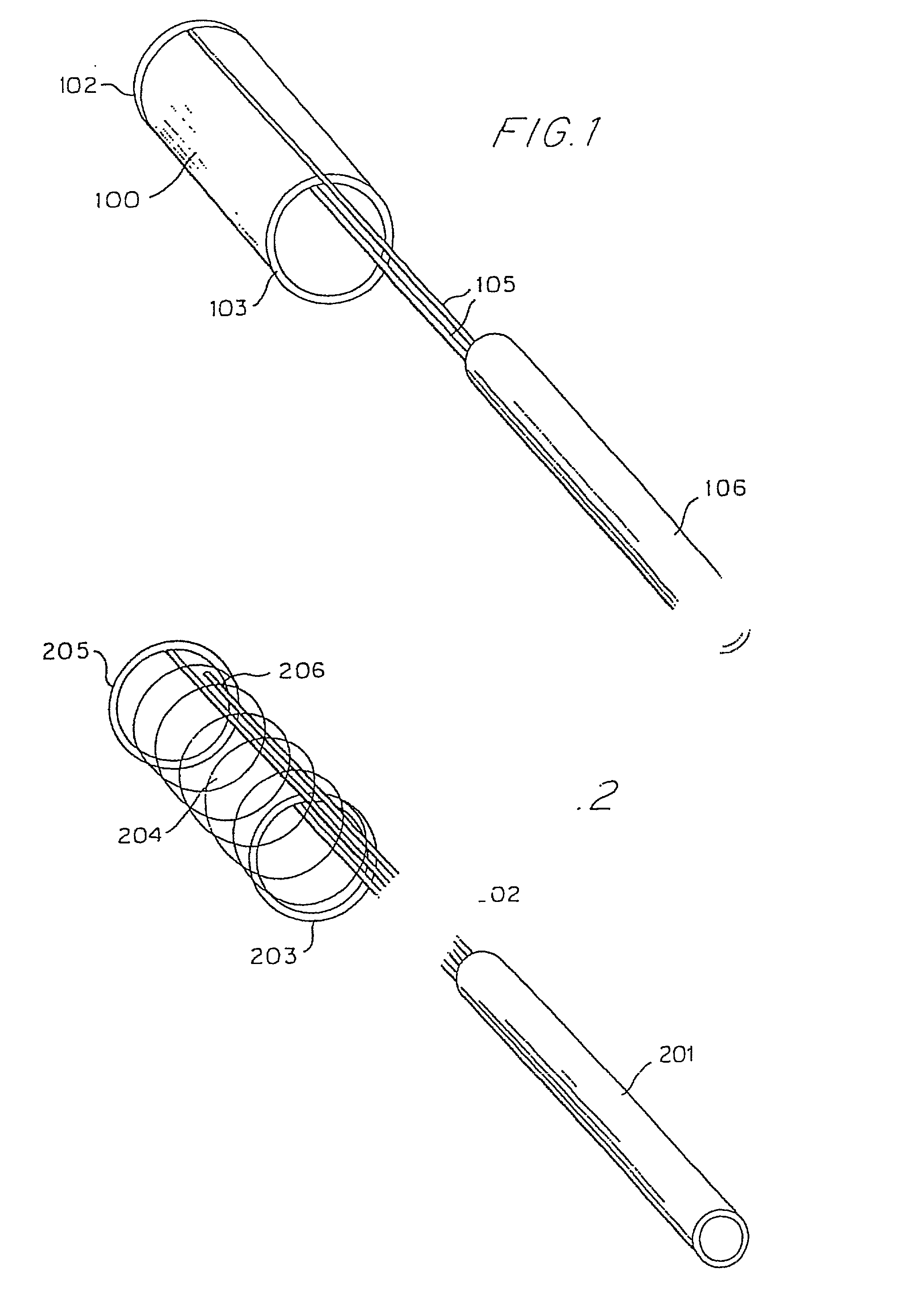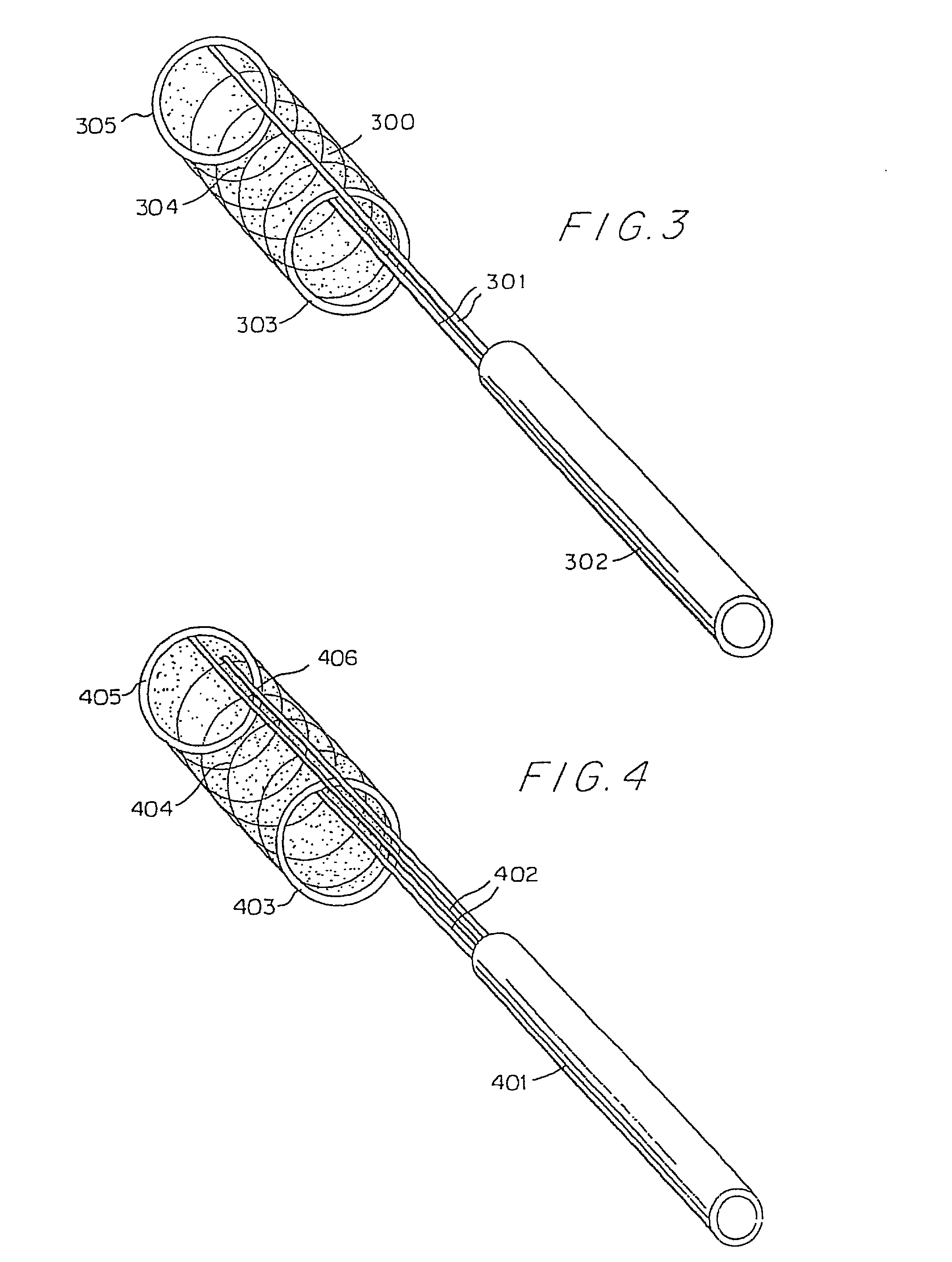Endovascular thin film devices and methods for treating and preventing stroke
a thin film device and endovascular technology, applied in the direction of prosthesis, blood vessels, catheters, etc., can solve the problems of inability to use urokinase or tpa for thrombolysis, inability to treat and prevent stroke, and inability to achieve endovascular treatment strategies for neurovascular disorders
- Summary
- Abstract
- Description
- Claims
- Application Information
AI Technical Summary
Benefits of technology
Problems solved by technology
Method used
Image
Examples
Embodiment Construction
[0090] The present invention provides endovascular thin film devices which are useful in treating and preventing stroke, including ischemic stroke caused by a blood clot in a blood vessel in the brain or hemorrhagic stroke caused by aneurysmal subarachnoid hemorrhage. These devices can also be used to restore patency and otherwise treat other areas of the body, such as the trachea, esophagus, colon, and extracranial vessels, etc.
[0091] The endovascular thin film devices according to the present invention can be produced in a variety of configurations for treating ischemic and hemorrhagic stroke.
[0092] The thin film device can be in the form of an endoluminal sleeve for treating sidewall aneurysm configurations, well dissection and fusiform aneurysms, as well as focal areas of atherosclerosis via endoluminal reconstruction. The thin film sleeve can be constructed of a thin film of a shape memory alloy, or of a monomer and catalyst mixture encased in a biocompatible envelope. The thin...
PUM
| Property | Measurement | Unit |
|---|---|---|
| Length | aaaaa | aaaaa |
| Thickness | aaaaa | aaaaa |
Abstract
Description
Claims
Application Information
 Login to View More
Login to View More - R&D
- Intellectual Property
- Life Sciences
- Materials
- Tech Scout
- Unparalleled Data Quality
- Higher Quality Content
- 60% Fewer Hallucinations
Browse by: Latest US Patents, China's latest patents, Technical Efficacy Thesaurus, Application Domain, Technology Topic, Popular Technical Reports.
© 2025 PatSnap. All rights reserved.Legal|Privacy policy|Modern Slavery Act Transparency Statement|Sitemap|About US| Contact US: help@patsnap.com



